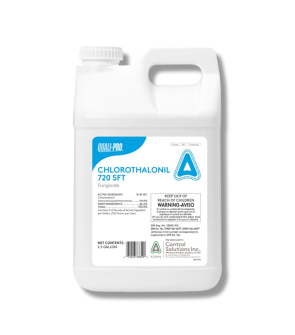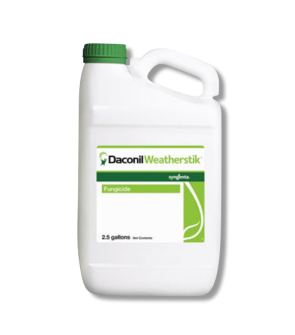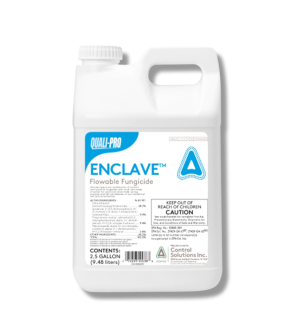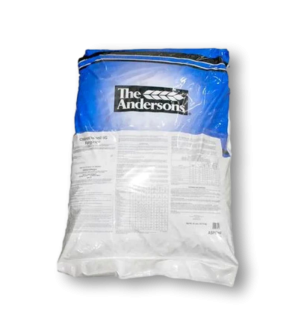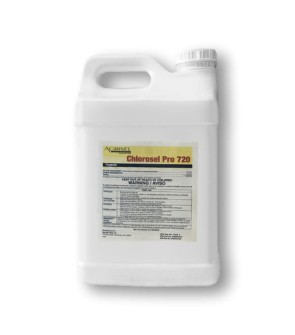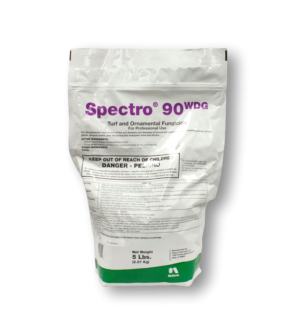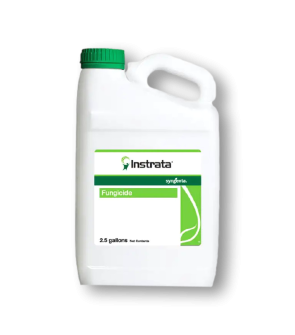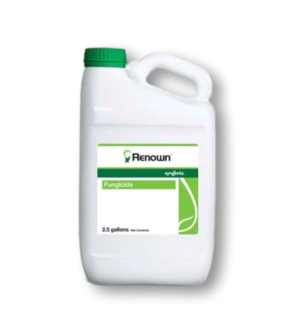Gain access to personalized product screening, the best pricing, rewards, and more!
Most Effective Products
Chlorothalonil
If your lawn or landscape area has encountered a fungal disease, it can turn from a small blemish to a large, ugly eyesore that could kill your plants if you don't intervene. This is when a fungicide may be necessary to implement on your lawn to kill off the fungus and prevent it from spreading further. A fantastic product that can effectively control disease and fungus is Chlorothalonil.
On this page, we will provide some background on Chlorothalonil and explain how it effectively eliminates fungus and disease. You can also shop for the top fungicide we recommend, which contains Chlorothalonil.
What is Chlorothalonil?
Chlorothalonil is a fungicide that controls fungi that grow on trees, vegetables, turf, small fruits, ornamentals, and other crops. It also controls mold, mildew, algae, bacteria, and fruit rot. In addition, Chlorothalonil can be used to control certain pests like mites and ticks and to protect wood.
First registered to the EPA in 1966, Chlorothalonil is used mainly in agricultural settings and is regarded as one of the top-used fungicide active ingredients in the US, alongside Sulfur and Copper. Chlorothalonil comes in various formulations such as dust, dry or water-soluble granules, wettable powder, a liquid concentrate, fogging concentrate, and a dip.
How Does Chlorothalonil Work?
Mode of Action
Chlorothalonil's mode of action is to interfere with the fungus's enzyme systems, causing it to be unable to perform essential functions related to its growth and eventually die.
Benefits of Chlorothalonil

Chlorothalonil is an effective fungicide for lawns with a broad label. It protects against common diseases like Dollar Spot, Brown Patch, Leaf Spot, Anthracnose, and more. Use Chlorothalonil to protect vulnerable plants on a variety of treatment sites, such as golf courses, nurseries, lawns, and agricultural areas.
Drawbacks of Chlorothalonil
Chlorothalonil is not a systemic fungicide. As a result, products containing Chlorothalonil must be reapplied regularly during the growing season. Chlorothalonil should be applied to fine fescue as phytotoxicity may occur.
Chlorothalonil for lawns has a maximum allowed application rate that should not be exceeded (for example, the total Chlorothalonil active ingredient per acre per year allowed is 88.4 pounds). Check the label of your product for details.
Is Chlorothalonil Safe?
Chlorothalonil is safe when applied according to label directions. As with any of our chemicals, wearing personal protective equipment is required to lessen the risks of inhaling, ingesting, or coming in contact with the skin.
The minimum PPE required when handling Chlorothalonil-based products includes chemical-resistant gloves, eye protection, and long-sleeved clothing. Follow the label instructions for the proper directions when applying the product and know what safety measures to apply. Keep people and pets off the treatment area until the product completely dries.
What To Expect

When applying Chlorothalonil, you should expect treated plants to be protected from fungus and disease on contact for up to two weeks, depending on the disease you are treating, the plant and the conditions of the area, and how favorable they are to disease.
When applying Chlorothalonil-based products to target areas, you should water the product after application. For continued protection against disease, you will need to reapply in 7 to 14-day intervals.
Featured Products
Chlorothalonil DF Fungicide- Chlorothalonil DF is a dry, flowable fungicide that prevents and controls various plant diseases. It is approved for use on cool or warm-season grasses and various ornamental plants and trees. Chlorothalonil DF can control dollar spots, brown patch, leaf spots, and more.







